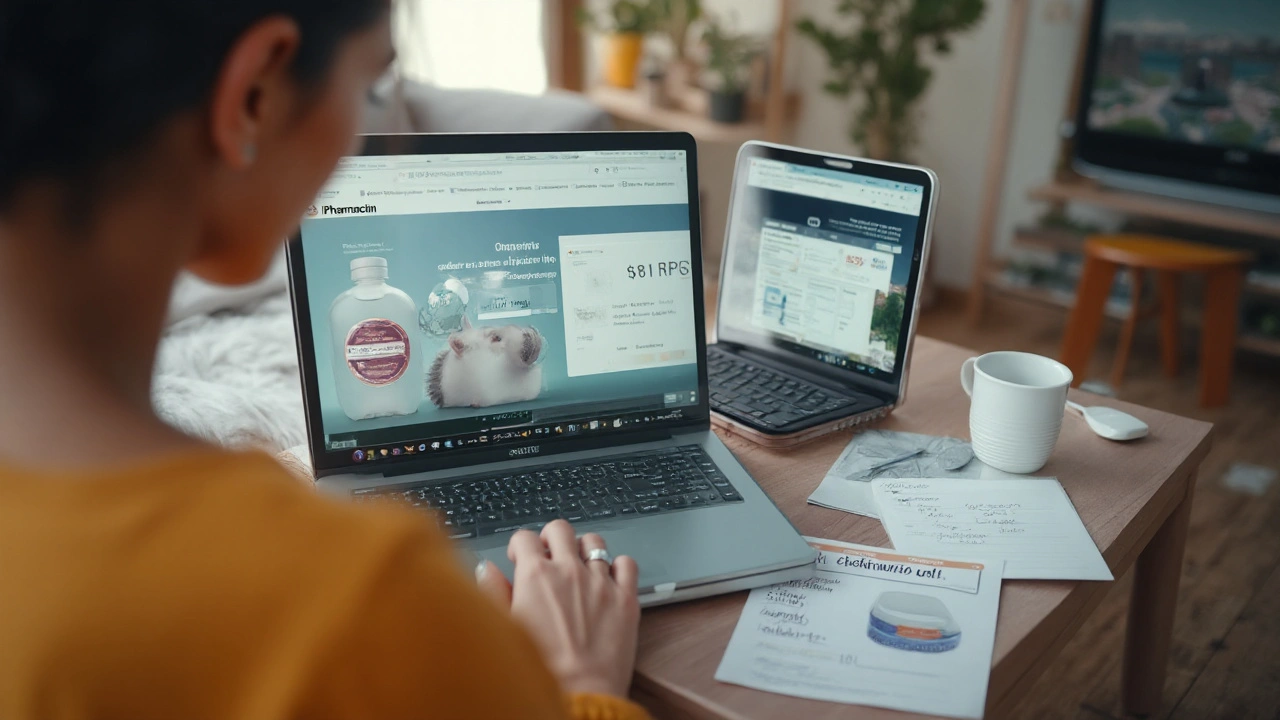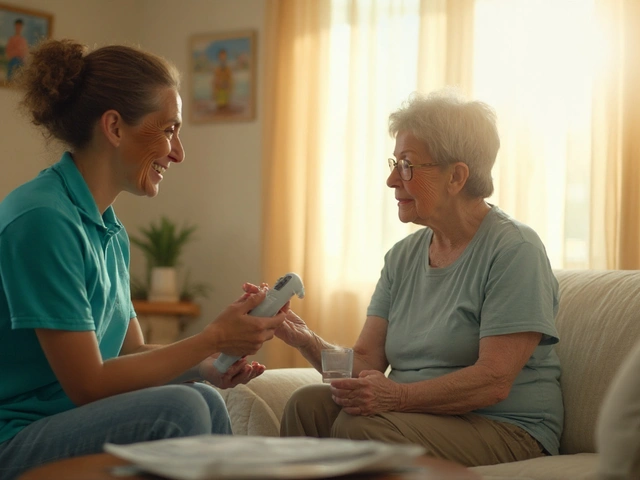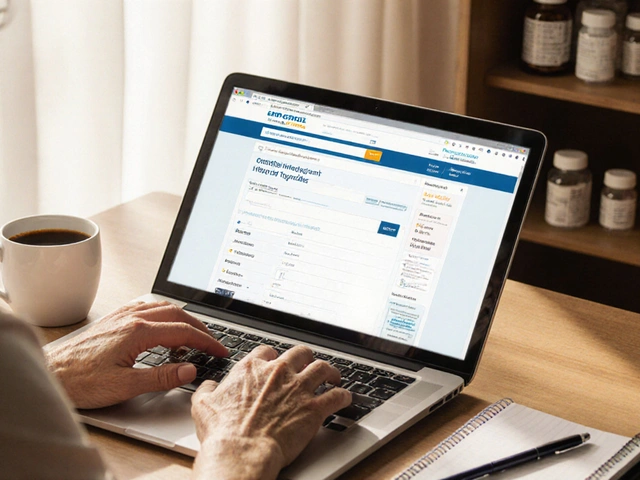
You want a straight answer: can you buy generic Levaquin (levofloxacin) online cheaply, and do it without getting scammed or risking your health? Yes-if you stick to licensed pharmacies, know the real price range, and respect what this drug can and can’t do. Levofloxacin is powerful and useful in specific infections, but it carries serious safety warnings and isn’t a first-choice antibiotic for routine coughs or simple UTIs. I live in Auckland, and I’ll keep this grounded in what actually works in New Zealand in 2025, with global tips you can use anywhere.
What levofloxacin is (and when you actually need it)
Levofloxacin is the generic name for Levaquin, a fluoroquinolone antibiotic. It’s used for things like community-acquired pneumonia, complicated urinary tract infections (including pyelonephritis), chronic bacterial prostatitis, some skin infections, and post-exposure plague treatment. It’s strong and broad-spectrum-that’s the draw and the risk.
Here’s the part most product pages gloss over: for sinusitis, acute bronchitis, and uncomplicated UTIs, major regulators advise using levofloxacin only if there are no other options. That’s because fluoroquinolones carry a risk of serious, sometimes permanent side effects affecting tendons, nerves, mental health, and more.
“Because fluoroquinolones have the risk of serious known side effects, the risks outweigh the benefits for patients with acute sinusitis, acute bronchitis, and uncomplicated urinary tract infections who have other treatment options.” - U.S. FDA Drug Safety Communication (updated 2018)
New Zealand clinicians follow similar caution. Medsafe has highlighted tendon injury, peripheral neuropathy, dysglycaemia, QT prolongation, and rare aortic aneurysm risks in safety updates. The message is consistent: use this class when it’s clearly indicated.
Typical tablet strengths are 250 mg, 500 mg, and 750 mg. Duration is usually short (for example, 5-14 days depending on the condition) and dosing may need adjustment in kidney impairment. There are also eye-drop formulations (ophthalmic), which are a different use-case and dose altogether. If you’re not sure levofloxacin is the right antibiotic for your case, that’s your signal to speak with a prescriber before you look at checkout buttons.
Safe ways to buy online in 2025 (NZ + global)
If your goal is to buy generic levofloxacin online without drama, the plan is simple: use a licensed pharmacy, get a valid prescription, and verify the business before you share payment or ID. Anything that skips those steps is a red flag.
Quick note on legality:
- New Zealand: levofloxacin is a prescription-only medicine. You need a valid prescription from a NZ-registered prescriber (or an accepted overseas script via a NZ pharmacist’s professional judgement). Medsafe licenses pharmacies; they can dispense online and courier to you.
- United States/Canada/UK/EU: also prescription-only. The same basic rules apply-buy from licensed pharmacies and avoid sites that sell antibiotics without a prescription.
How to do it safely (step-by-step):
- If you already have a prescription:
- Upload it to a NZ-registered online pharmacy (look for their license details and a physical pharmacy address on the site), or ask your clinic to e-prescribe directly.
- Compare total cost: medicine price + dispensing fee + shipping. Delivery in NZ is usually 1-3 working days.
- If you don’t have a prescription:
- Book a telehealth consult with a NZ-registered prescriber. Be ready to discuss symptoms, history, and past antibiotics. If levofloxacin isn’t the best option, expect them to say so-that’s good practice.
- After the consult, ask the script to be sent straight to your chosen online pharmacy, or pick up locally if timing matters.
- Buying internationally (mail-order):
- Use accredited pharmacies only. In the US, look for NABP/.pharmacy or VIPPS accreditation; in Canada, CIPA. No prescription required = walk away.
- Check import rules. NZ has strict personal importation limits. Expect customs scrutiny if the pharmacy isn’t recognized or your parcel looks suspicious.
Five red flags that mean “close the tab”:
- No prescription required for antibiotics.
- Prices that are too-good-to-be-true (e.g., pennies per tablet) with no dispensing fee.
- No pharmacist contact details or license information.
- No return policy or a vague “worldwide warehouse” story.
- Requests for crypto or wire transfer only.
Pro tip if you’re in Auckland (or anywhere in NZ): many brick-and-mortar pharmacies will match or beat online cash prices if you ask. A quick phone call can save you both money and shipping time.

Real prices, doses, and what affects cost
Generic levofloxacin is inexpensive in 2025, but the price you pay depends on dose, quantity, and fees. The “headline price” on a site isn’t the whole story; factor in consultation cost, dispensing fee, and courier.
| Source | Common Pack | Typical 2025 Price Range | Prescription Needed | Shipping Time | Notes |
|---|---|---|---|---|---|
| NZ community pharmacy (cash/private) | 500 mg x 7-10 tablets | NZD $10-$60 + dispensing fee | Yes | Same day | Prices vary; call ahead for a quote. |
| NZ-registered online pharmacy | 500 mg x 7-10 tablets | NZD $12-$65 + $0-$8 courier | Yes | 1-3 working days | Secure upload of e-script; easy tracking. |
| US retail (cash without insurance) | 500 mg x 7 tablets | USD $8-$35 with coupons | Yes | Same day | Coupon price is often much lower than list. |
| Accredited international mail-order | 500 mg x 10 tablets | USD $10-$40 + shipping | Yes | 1-3 weeks | Verify accreditation (CIPA/VIPPS/.pharmacy). |
Heuristics that keep your costs down:
- Ask for the lowest cash price. Many pharmacies have tiered pricing.
- Compare per-tablet cost. Larger packs can be cheaper per tablet, but don’t buy more than your prescribed course.
- Telehealth plus e-prescribing can be cheaper than an urgent clinic visit if you qualify.
- Avoid “no-prescription” sites; counterfeit or sub-potent antibiotics end up costing you more in failed treatment and risk.
Common dosing patterns your prescriber might use (examples, not instructions):
- Complicated UTI/pyelonephritis: 500 mg once daily for 7-10 days, or 750 mg once daily for 5 days.
- Community-acquired pneumonia: 500 mg once daily for 7-14 days, or 750 mg once daily for 5 days.
- Chronic bacterial prostatitis: 500 mg once daily for 28 days.
These vary by bug, severity, kidney function, and local resistance patterns. Do not self-dose. If you’re on any kidney medication or have reduced renal function, dosing adjustments are standard.
Risks, red flags, and how to protect yourself
Fluoroquinolones are double-edged. They’re broad-spectrum and convenient (once-daily), but the safety profile is serious enough that regulators added boxed warnings and class-wide cautions.
Major risks you should know about:
- Tendons and muscles: tendonitis and tendon rupture (especially Achilles). Risk increases with age, steroid use, transplant, intense exercise.
- Nerves: peripheral neuropathy (burning, tingling, numbness). Can start quickly and be long-lasting.
- Brain and mood: agitation, anxiety, confusion, insomnia; rare seizures or psychosis, especially with other risk factors.
- Heart: QT prolongation. Higher risk if you take other QT-prolonging meds, have low potassium/magnesium, or underlying arrhythmia.
- Blood sugar swings: hypoglycaemia or hyperglycaemia, especially in diabetes or with certain meds.
- Aortic aneurysm/dissection: rare but reported; higher risk in older adults and those with vascular disease.
- Photosensitivity: easier sunburn; use sunscreen and cover up.
Serious drug/food interactions to avoid:
- Antacids, iron, zinc, calcium, magnesium: these bind levofloxacin and block absorption. Take levofloxacin at least 2 hours before or 4-6 hours after such products (including some supplements and dairy-heavy meals).
- Warfarin and blood thinners: increased bleeding risk; INR monitoring may be needed.
- Antiarrhythmics and other QT-prolonging drugs (e.g., some antipsychotics, macrolide antibiotics): increased risk of arrhythmia.
- NSAIDs: can raise seizure risk when combined with fluoroquinolones in susceptible people.
Smart safety habits while you’re on it:
- Feeling tendon pain (heel, shoulder, wrist) or nerve symptoms? Stop the drug and contact your prescriber the same day.
- Separate doses from mineral supplements and antacids as above.
- Hydrate well; keep caffeine moderate if you feel jittery.
- If you’re pregnant, trying to conceive, or breastfeeding, ask for alternatives.
- If you have kidney disease, confirm your dose is adjusted.
Antibiotic stewardship matters. Using a fluoroquinolone for something that would respond to a narrow-spectrum antibiotic isn’t just a theoretical problem-it increases resistance and exposes you to risks for no gain. If your prescriber says “not this drug,” that’s them doing their job.

Smarter alternatives, comparisons, and your next steps
When is levofloxacin the right buy? Usually when you and your prescriber have a clear indication (e.g., radiology- or lab-supported pneumonia, complicated UTI, prostatitis) and alternatives aren’t suitable. When is it not the right buy? When you’re trying to self-treat a mild cough, a short bout of sinus pressure, or a straightforward UTI with no red flags.
Common alternatives to discuss with a clinician:
- Uncomplicated UTI: nitrofurantoin or trimethoprim-sulfamethoxazole (resistance patterns matter).
- Sinusitis: watchful waiting or amoxicillin/clavulanate when needed; doxycycline if penicillin-allergic.
- Bronchitis: often viral; antibiotics usually aren’t helpful unless there’s COPD exacerbation or pneumonia concern.
- Skin infections: flucloxacillin/cefalexin depending on organism and allergy status; levofloxacin for specific cases only.
Levofloxacin vs ciprofloxacin (quick take):
- Levofloxacin has better activity against typical pneumonia pathogens; ciprofloxacin is stronger against some gram-negatives and is often cheaper.
- Safety warnings are class-wide; both carry similar risks.
Credible sources that underpin the above:
- FDA Drug Safety Communications on fluoroquinolones (latest boxed-warning updates in 2016-2018).
- Medsafe New Zealand safety communications and Prescriber Update articles on fluoroquinolones.
- IDSA guidelines for common infections (e.g., community-acquired pneumonia, UTI) that outline when fluoroquinolones are appropriate.
Your action plan (clean, ethical CTA):
- Decide if you actually need levofloxacin. If you’re not sure, book a telehealth consult-it’s faster than guessing.
- Get a proper prescription. Ask for an e-script to save time.
- Price-check 2-3 licensed options: your local pharmacy, a NZ-registered online pharmacy, and (if relevant) an accredited mail-order service.
- Verify licenses: look for Medsafe listing in NZ; NABP/.pharmacy or VIPPS in the US; CIPA in Canada.
- Order the exact quantity for your course. No stockpiling; finish the course as prescribed.
Checklist to avoid counterfeits and hassles:
- Prescription required? Yes → proceed. No → stop.
- Clear pharmacy license and pharmacist contact details? Yes → proceed.
- Transparent pricing with fees and shipping? Yes → proceed.
- Secure checkout (https) and standard payment methods (no crypto-only)? Yes → proceed.
- Medication appearance (on arrival) matches what the pharmacist described? If not, call before taking.
Mini‑FAQ
- Can I get levofloxacin in NZ without seeing a doctor? No. It’s prescription-only. A quick telehealth appointment is usually the fastest route.
- Is brand Levaquin still sold? In many places the brand has been discontinued; generics are standard and equivalent when sourced from licensed pharmacies.
- How cheap is “too cheap”? If the total is far below NZD $1 per 500 mg tablet with no fees, be suspicious. Realistic all-in prices include a dispensing fee.
- Can I split tablets to save money? Only if your pharmacist confirms the tablet is suitable for splitting and your dosing allows it. Don’t improvise.
- What if I start getting tendon pain? Stop the medicine and contact your prescriber immediately.
Next steps
- If you have a script now: call two pharmacies (one local, one online) and compare total cost today.
- If you don’t: book a telehealth consult; ask whether levofloxacin is appropriate for your infection and what the narrowest effective option is.
- Travelling soon? Ask your clinician about a standby plan that respects stewardship and your personal risks.
Troubleshooting
- Delayed delivery but you’re worsening: switch to local pickup; pharmacies can often transfer the prescription.
- Price shock at checkout: ask for cash price, any generic alternatives, or a smaller pack that still covers your course.
- Drug interaction concern: call the pharmacy before taking the first dose-they can check your med list fast.
I know the hunt for “cheap” can lead to sketchy corners of the internet. Don’t go there. Licensed channels in NZ are competitive on price in 2025, and they’ll ship fast. Do it right, protect your health, and you’ll still keep your costs in check.





Comments (12)
Madeline Leech
Stick to licensed pharmacies, no excuses. If it’s prescription-only where you live then that’s not some optional checkbox to ignore.
Buying antibiotics from sketchy sites to save a few bucks is exactly how you end up with resistance, ruined treatment outcomes, and a mess you didn’t need.
Look up the pharmacy licence, check for an e-script workflow, and don’t fall for crypto-only payment or shockingly low per-tablet prices with zero fees.
Tendon rupture and neuropathy aren’t hypothetical horror stories, they’re real and permanent in some people, so act like the drug matters, because it does.
Ellen Laird
Prescription only, end of story.
Matt Miller
Nice breakdown of price drivers and safety flags, the bit about separating antacids from doses is key.
Also good to remind folks that larger packs can be cheaper per tablet but you shouldn’t stockpile them.
Fabio Max
Totally agree with the telehealth route for a legit script, saved me time and avoided an urgent care copay last year.
When I needed an antibiotic after a confirmed UTI they sent an e-script and the local online pharmacy had fast courier and clear fees.
It felt much better to have a prescriber explain why they picked the drug and the exact duration rather than guessing off some forum.
Darrell Wardsteele
Two quick notes for clarity and grammar snob mode.
It should be written that absorption is reduced by divalent cations, not that the minerals "block" the medicine entirely.
Also, OTC antacids and iron supplements definitely reduce bioavailability so spacing is important as stated, but the advice needs to be precise in wording to avoid misinterpretation.
Overall solid tips but language matters when people are self-medicating.
Barry White Jr
Love that the post stresses stewardship.
Too many people treat antibiotics like candy, and that mindset is the real cost driver here.
Andrea Rivarola
Medication decisions are not just transactional, they are layered and personal and I want to expand a bit on that since the OP touched on several points that deserve extra emphasis.
First off, the idea that a telehealth consult is a simple shortcut glosses over the nuance several prescribers use when deciding whether a fluoroquinolone is actually necessary.
Clinicians often weigh local resistance patterns, patient history including previous antibiotic responses, co-morbidities like diabetes or vascular disease, and even lifestyle factors that matter for tendon risk.
So when someone says "get a script", that script should come after a responsible discussion, not a quick checkbox.
Second, cost transparency is more than a price tag, it is about explaining what you are paying for - the pharmacist's clinical review, counselling about interactions, and the quality assurance that a licensed pharmacy provides.
Those little services mean a lot when something goes sideways, and they are the reason avoiding sketchy online vendors is more than bureaucracy.
Third, the bit about separating antacids and mineral supplements is crucial and poorly followed by most people who take vitamins morning and night.
It is surprisingly easy to render an antibiotic subtherapeutic simply by taking it next to a calcium-rich breakfast or a mineral supplement.
Fourth, the post rightly flags QT prolongation and hypoglycaemia risks, which are not one-off curiosities but real monitoring concerns in certain populations.
Patients on methadone, some antipsychotics, or with low potassium need a pharmacist or prescriber to think through alternatives or monitoring plans.
Fifth, for people who travel a lot or are frequently in remote places having a documented plan and a proper supply is part of safety not stockpiling.
That means a clear prescription for a defined course, with instructions to avoid sharing and to get local care if symptoms progress.
Sixth, the instructions about not splitting tablets unless advised are practical and protective; splitting can change pharmacokinetics and some tablets have coatings for a reason.
Finally, antibiotic stewardship is a public good that also protects individual outcomes by preserving options for real infections where a fluoroquinolone is the best head-to-head choice.
So yes, cheap meds are tempting but the right path is licensed, prescribed, and explained.
Tristan Francis
They keep telling you to trust licensed pharmacies and official guidance while big pharma funds those regulators.
That dynamic always skews decisions toward more prescriptions and more profit for manufacturers.
Generics can be fine but there are global supply chains and opaque rebates that change availability and price overnight.
Watch the shipping origins and batch labels, because sometimes the same tablet looks different across markets and supply rerouting happens without public notice.
People should stay skeptical and verify lot numbers when possible and keep receipts and pictures if something seems off.
Keelan Walker
Good points and I love the practical checklist at the end, it makes the whole process feel manageable and not scary 😊
Also a small shoutout to pharmacists who actually call people back and double check interactions, that human follow up matters a lot 🙌
When everyone plays the part-prescriber, pharmacist, patient-the risks drop and the outcome is better for all 😄
Heather Wilkinson
Exactly, that little human touch is everything 🙂
Darrell Wardsteele
Conspiracy aside, keep logs and photos of packaging, batch numbers, and expiry dates if buying internationally.
If something differs from the pharmacist's description call them first then report to the regulator, doing both keeps the record straight.
Also keep receipts for customs and imports, it's practical not paranoid.
Barry White Jr
Small practical tip: if delivery is delayed and symptoms are getting worse, swap to local pickup and have the pharmacy transfer the script.
It's faster and keeps treatment on track without risking a dodgy international parcel.